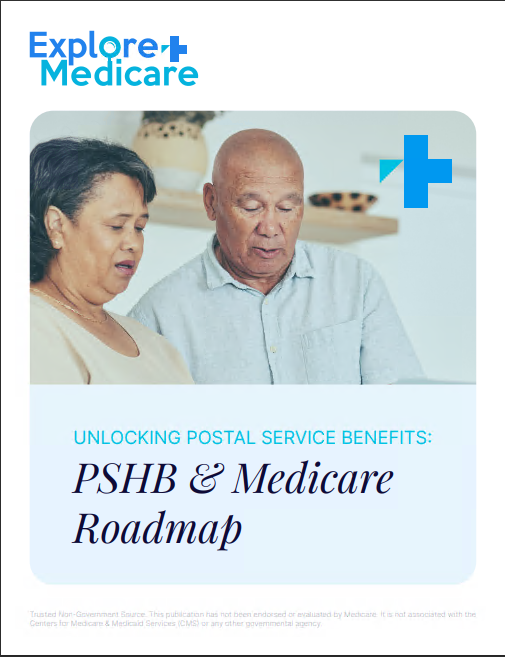Key Takeaways
-
Medicare Part A covers a wide range of hospital-related services, but it is not entirely free or unlimited—knowing the costs and limitations helps you avoid unexpected bills.
-
Enrollment in Part A is automatic for most people turning 65, but understanding what you’re entitled to and when coverage applies is essential for making informed decisions about your care.
What Medicare Part A Is—and Isn’t
Medicare Part A is often referred to as hospital insurance, and while it plays a critical role in your healthcare coverage, it doesn’t cover everything. In 2025, Part A provides benefits primarily for inpatient hospital care, skilled nursing facility stays, hospice care, and some home health care services. But there are cost-sharing requirements, and there are coverage limits you need to be aware of.
If you worked and paid Medicare taxes for at least 40 quarters (roughly 10 years), you generally qualify for premium-free Part A. If you didn’t meet that requirement, you may still enroll, but you’ll pay a monthly premium.
When Coverage Begins and Who Gets It
You’re typically enrolled in Part A automatically when you turn 65 if you’re already receiving Social Security or Railroad Retirement Board benefits. If not, you’ll need to sign up during your Initial Enrollment Period (IEP)—this 7-month window includes the three months before your 65th birthday, your birthday month, and the three months after.
If you miss your IEP and don’t qualify for a Special Enrollment Period (SEP), you can sign up during the General Enrollment Period (January 1 to March 31), and your coverage will begin July 1 of that year. Late enrollment may also mean paying a higher premium.
What’s Covered Under Part A in 2025
Understanding the scope of Medicare Part A can help you prepare for both planned and unplanned medical care. Here’s what you can expect in terms of coverage this year:
Inpatient Hospital Care
This includes care you receive after being formally admitted to a hospital. Covered services typically include:
-
Semi-private rooms
-
Meals
-
General nursing care
-
Drugs as part of your inpatient treatment
-
Other hospital services and supplies
It’s important to note that Part A does not cover private-duty nursing or personal convenience items like a television or telephone in your hospital room.
Skilled Nursing Facility (SNF) Care
After a qualifying hospital stay of at least three consecutive days (not counting the day of discharge), you may be eligible for SNF care. Part A covers:
-
Semi-private rooms
-
Meals
-
Skilled nursing care
-
Physical and occupational therapy
-
Speech-language pathology services
-
Medical social services
Coverage is limited to 100 days per benefit period, with full coverage for the first 20 days. From day 21 to day 100, you pay daily coinsurance.
Hospice Care
If you’re terminally ill and have six months or less to live (as certified by a doctor), Part A covers hospice care, which includes:
-
Pain relief and symptom management
-
Nursing and medical services
-
Social services
-
Grief counseling for your family
You must sign a statement choosing hospice care instead of curative treatments for your terminal illness.
Home Health Care
Part A also provides limited home health services if you’re homebound and your doctor certifies the need. Covered services may include:
-
Part-time skilled nursing care
-
Physical, occupational, and speech therapy
-
Medical social services
Part A doesn’t cover 24-hour home care or meals delivered to your home.
What It Costs You in 2025
Even though many beneficiaries qualify for premium-free Part A, there are still other out-of-pocket costs involved.
Deductibles and Coinsurance
-
Inpatient hospital deductible: $1,676 per benefit period
-
Days 1–60 in the hospital: $0 coinsurance
-
Days 61–90: $419 per day
-
Days 91 and beyond: $838 per lifetime reserve day (up to 60 days over your lifetime)
-
Skilled Nursing Facility (SNF) days 21–100: $209.50 per day
These amounts can add up quickly, especially if you experience multiple hospitalizations in a year. A benefit period begins the day you’re admitted to a hospital and ends after you haven’t received any inpatient care for 60 days in a row.
What’s Not Covered by Part A
Many people mistakenly assume Medicare Part A includes all medical services, but several key services are excluded, such as:
-
Doctor’s services outside the hospital
-
Outpatient care
-
Prescription drugs (except those administered during an inpatient stay)
-
Long-term custodial care
-
Private rooms (unless medically necessary)
-
Personal items and non-emergency transportation
You’ll typically need Medicare Part B for most outpatient services and doctor visits, and Part D for prescription drugs.
How to Maximize Your Hospital Coverage
To make the most of your Part A benefits, you’ll want to understand how to coordinate it with other types of Medicare or health coverage.
Use Allotted Benefit Days Wisely
Track your hospital benefit periods to avoid unnecessary cost increases. If you’re discharged and then readmitted after 60 days, a new benefit period begins—and that means a new deductible.
Know When to Transition to Other Care
If you’re moving from hospital to skilled nursing care or from curative treatment to hospice, talk to your healthcare provider about the paperwork and certifications Medicare requires. Timing matters.
Combine With Part B and Supplemental Coverage
Most people who enroll in Part A also enroll in Part B to broaden their coverage. If you want to limit out-of-pocket costs, consider looking into supplemental insurance options or Medicare Advantage—but do so with full understanding of each part’s benefits and trade-offs.
Enrollment Deadlines Matter More Than You Think
Missing an enrollment window can result in higher premiums or coverage delays. Here’s what you should remember:
-
Initial Enrollment Period (IEP): 7 months around your 65th birthday
-
General Enrollment Period (GEP): January 1 to March 31 each year
-
Special Enrollment Period (SEP): Only available in specific cases like losing employer coverage or moving
Enroll on time to protect your access to care and avoid penalties.
Hospital Costs Can Escalate Without the Right Planning
Hospital stays are among the most expensive types of care. Without full knowledge of what Part A covers—and doesn’t—you might find yourself paying more than you expected. Understanding coinsurance and deductible amounts, benefit periods, and SNF coverage caps is the first step toward protecting yourself.
Review your coverage at least annually to make sure your healthcare needs are still aligned with your plan. Medical needs can change quickly, especially as you age, and staying informed helps you stay prepared.
Getting the Most Out of Medicare Part A in 2025
If you’re turning 65 this year, already enrolled, or reviewing your coverage, taking the time to understand Medicare Part A is well worth it. This part of Medicare gives you a strong foundation for hospital care, but it isn’t a blanket solution. Costs, limits, and gaps are part of the package.
Stay informed about deadlines, what’s covered, and how to plan for possible gaps in care. Doing so helps you stay in control of your health and your wallet.
For guidance tailored to your specific situation, speak with a licensed agent listed on this website who can help walk you through your options.









